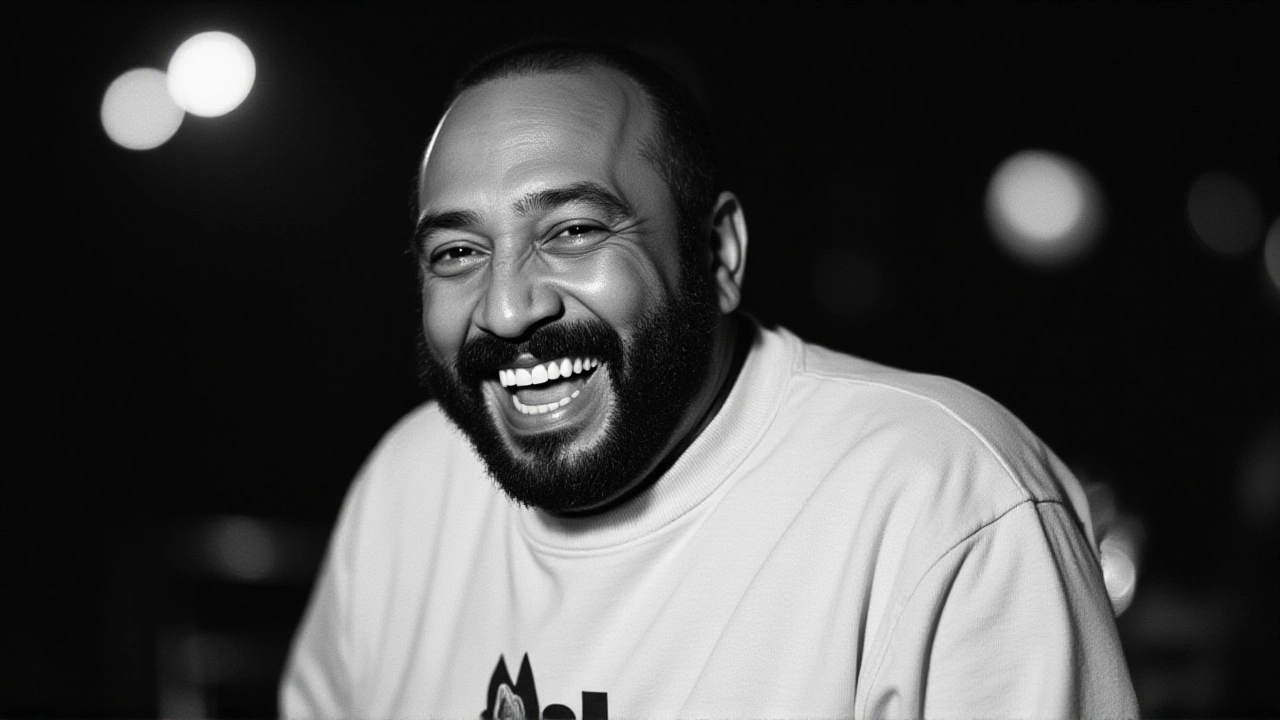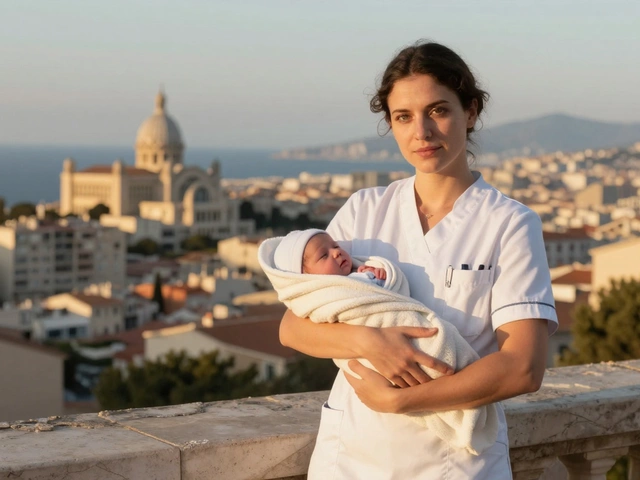When Eddie Palmieri sat down at the piano, the whole room shifted. Not just because of the notes — but because of the rhythm in his forearms, the growl in his voice, the way his hands didn’t just play the keys, they pounded them like timbales. The man who fused Harlem’s grit with Puerto Rico’s soul died on Wednesday, August 6, 2025, at age 88 in his longtime home in Hackensack, New Jersey, after a prolonged illness. His daughter Gabriela Palmieri confirmed the news to The New York Times. Fania Records, the label that released his most defining work, called him "one of the most innovative and unique artists in music history." And they weren’t exaggerating.
The Sound That Changed Latin Music
Eddie Palmieri didn’t just play piano. He attacked it. His technique — elbows driving, forearms slamming, sometimes even humming along — turned the keyboard into a percussion instrument. NPR described it as a "full-body technique," and that’s exactly what made it revolutionary. In the 1960s, when mambo was fading and salsa hadn’t yet found its voice, Palmieri, raised in the Bronx to Puerto Rican parents who’d emigrated from Ponce in 1926, rebuilt the rules. He took Afro-Caribbean rhythms, layered them with jazz harmonies, and added a raw, emotional edge that felt like a street parade turned cathedral.
His 1961 formation of La Perfecta didn’t just revive a genre — it redefined it. The band’s tight, horn-driven arrangements, with Palmieri’s piano as the engine, became the blueprint for modern salsa. He didn’t just follow trends; he created them. By the time he released Harlem River Drive in 1971, he’d already cemented his place as a sonic architect.
A Legacy of Discovery
What many forget is that Palmieri wasn’t just a genius performer — he was a talent scout with an ear for greatness. He didn’t just record Ismael Quintana and Cheo Feliciano; he elevated them. In 1992, he introduced the world to La India through the album Llegó La India via Eddie Palmieri. That record didn’t just launch a career — it became a cultural moment. "He had a knack for spotting legendary singers," noted NPR’s Luis Trelles. And he did — again and again.
His 1987 album La Verdad with Tony Vega was a quiet masterpiece. The following year, he lost his brother and musical partner, Charlie Palmieri, suddenly. The grief didn’t silence him — it deepened his music. He returned with even more fire, turning loss into lyric.
Grammys, Glory, and the First Latino Winner
Palmieri won between nine and ten Grammy Awards — sources still debate the exact number — but the first one, in 1975, was historic. He became the first Latino artist ever to win a Grammy. That wasn’t just a milestone; it was a declaration. He didn’t wait for permission to be great. He built the stage himself.
His 2006 album Simpático earned his final Grammy — his 10th, according to some — a quiet triumph after decades in the spotlight. He had announced retirement in 2000, but like a true artist, he couldn’t stay away. He kept recording, kept collaborating, kept pushing boundaries. His 2004 tribute concert at Avery Fisher Hall for Charlie wasn’t just a memorial — it was a musical heirloom passed down.

More Than Music: The Nuyorican Soul
Palmieri’s identity as a Nuyorican — New York Puerto Rican — wasn’t a label. It was his compass. His anthem Puerto Rico wasn’t just a song; it was a love letter to the island his parents left, and the streets he never forgot. "It’s definitely going to excite you," he once told NPR. "I don’t guess I’m going to excite you with my music. I know it." That confidence wasn’t arrogance. It was certainty.
He received an honorary doctorate from Berklee College of Music in 1998 — a rare honor for a musician who never studied formally. His 30+ albums weren’t just products; they were archives of a culture. He gave voice to a generation that wasn’t always heard — the barrio kids, the immigrants, the dreamers who danced in living rooms with no stage, no spotlight.
Who He Left Behind
Eddie Palmieri is survived by his four daughters — Gabriela, Renee, Eydie, and Ileana — his son Edward, and four grandchildren. The music world lost a titan. But the rhythm? That’s still alive. In every piano riff that swings like a conga, in every salsa band that dares to be bold, in every kid in the Bronx who hears a record and thinks, "I can do that too."
Frequently Asked Questions
How did Eddie Palmieri’s style differ from other Latin pianists of his time?
While most Latin pianists focused on elegant, melodic runs, Palmieri used his entire body — forearms, elbows, even vocal growls — to make the piano sound like a percussion section. His technique fused Afro-Caribbean polyrhythms with jazz improvisation, creating a raw, driving sound that became the foundation of modern salsa. Critics called it "percussive jazz," and no one else replicated it quite like him.
Why is Fania Records so important to Eddie Palmieri’s legacy?
Fania Records was the epicenter of salsa’s golden age, and Palmieri was one of its most vital voices. The label released his landmark albums like Harlem River Drive and Palo Pa’ Rumba, helping turn Latin music from a regional sound into a global phenomenon. Their partnership wasn’t just commercial — it was cultural. Fania didn’t just distribute his music; they amplified his message of Nuyorican pride.
What was the significance of Palmieri winning the first Grammy for a Latino artist in 1975?
That win shattered a long-standing barrier in American music. Before Palmieri, Latino artists were rarely recognized by mainstream awards. His Grammy wasn’t just personal — it was political. It proved that Afro-Caribbean music could stand alongside jazz and rock on the highest stage. It opened doors for generations of Latin musicians who followed, from Marc Anthony to Bad Bunny.
How did Eddie Palmieri influence artists beyond Latin music?
His rhythmic innovation influenced jazz legends like Herbie Hancock and even rock musicians who embraced Afro-Cuban beats. His percussive piano style became a template for fusion artists in the 1970s and 80s. Bands like Santana and even hip-hop producers sampling his records acknowledged his impact. He didn’t just play music — he rewrote how rhythm could be felt, not just heard.
What role did his brother Charlie Palmieri play in his career?
Charlie was Eddie’s first musical mentor and later his rival-turned-partner. Both played piano in their uncle’s orchestra as teens, but Charlie became a successful bandleader first. Eddie’s early style was shaped by Charlie’s arrangements, and their bond was deep. After Charlie’s sudden death in 1988, Eddie channeled his grief into music, culminating in the 2004 tribute concert at Lincoln Center — a powerful, emotional homage to the brother who helped him find his voice.
Is Eddie Palmieri’s music still relevant today?
Absolutely. His albums are studied in music schools from New York to Santiago. Modern salsa and Latin jazz artists like Oscar Hernández and Sheila E. cite him as a primary influence. Streaming platforms report a 300% spike in streams of his work since his death. Songs like "Puerto Rico" and "Azucar" are still played at weddings, clubs, and protests — proof that his rhythm still moves the world.


